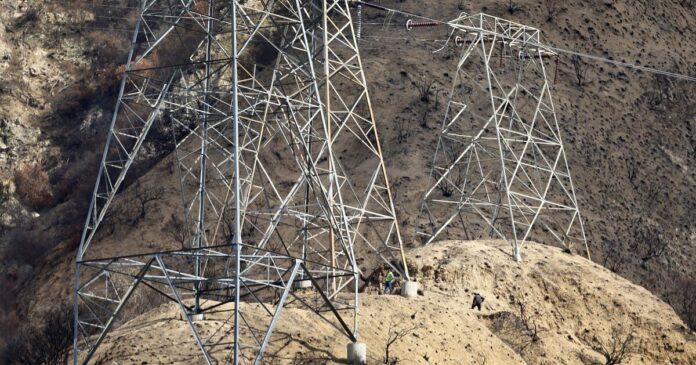“Edison’s Spending on Fire Prevention Measures: Are Customers Getting Their Money’s Worth?”
Southern California Edison’s electrical equipment continues to be a major source of concern as it continues to spark numerous fires in its territory, despite the utility’s significant spending on prevention measures. The utility has allocated billions of dollars towards initiatives such as insulated wires, tree trimming, weather stations, and increased equipment inspections in an effort to mitigate wildfire risks. However, the cost of these prevention measures is now accounting for roughly 15% of the average utility bill, up from 9% two years ago.
According to data from the state Public Utilities Commission, Southern California Edison reported 178 fires sparked by its equipment in the previous year, a significant increase from 107 fires in 2015. The utility serves 15 million people in Southern and Central California, making the impact of these fires widespread.
Critics, including former president of the Public Utilities Commission Loretta Lynch, attribute much of the blame to a state law signed by Governor Gavin Newsom in 2019, Assembly Bill 1054. This law limited the financial liability of utilities for wildfires they caused, shifting the burden of costs to customers. As a result, utilities have less incentive to effectively mitigate wildfire risks.
Despite Edison’s increased spending on fire prevention, questions remain about the effectiveness of these measures. State auditors have criticized utility regulators for not ensuring that the spending is yielding tangible results. Edison’s actions have come under intense scrutiny following the devastating Eaton wildfire that claimed 17 lives and destroyed thousands of homes. The utility is facing numerous lawsuits alleging that its equipment sparked the fire.
Edison executives have defended their efforts, stating that the company’s investments in tree trimming and other preventive measures have made customers safer. They claim that these initiatives have reduced the risk of catastrophic wildfires by more than 85% since 2017. However, critics argue that the utility’s approach to fire prevention is inadequate, especially in the face of worsening wildfire seasons exacerbated by climate change.
The passage of AB 1054 has significantly limited utilities’ liability for wildfires caused by their equipment, further shifting the financial burden to customers. While utilities like Edison have credited the law with reducing their liability, concerns remain about accountability and oversight. State auditors have faulted regulatory bodies for not holding utilities accountable for deficiencies in their wildfire prevention plans.
Lawmakers and environmental groups have raised questions about the effectiveness of current regulations and the need for stronger oversight of utility companies. The balance between protecting ratepayers and ensuring public safety remains a key concern as wildfires continue to pose a significant threat in California.
